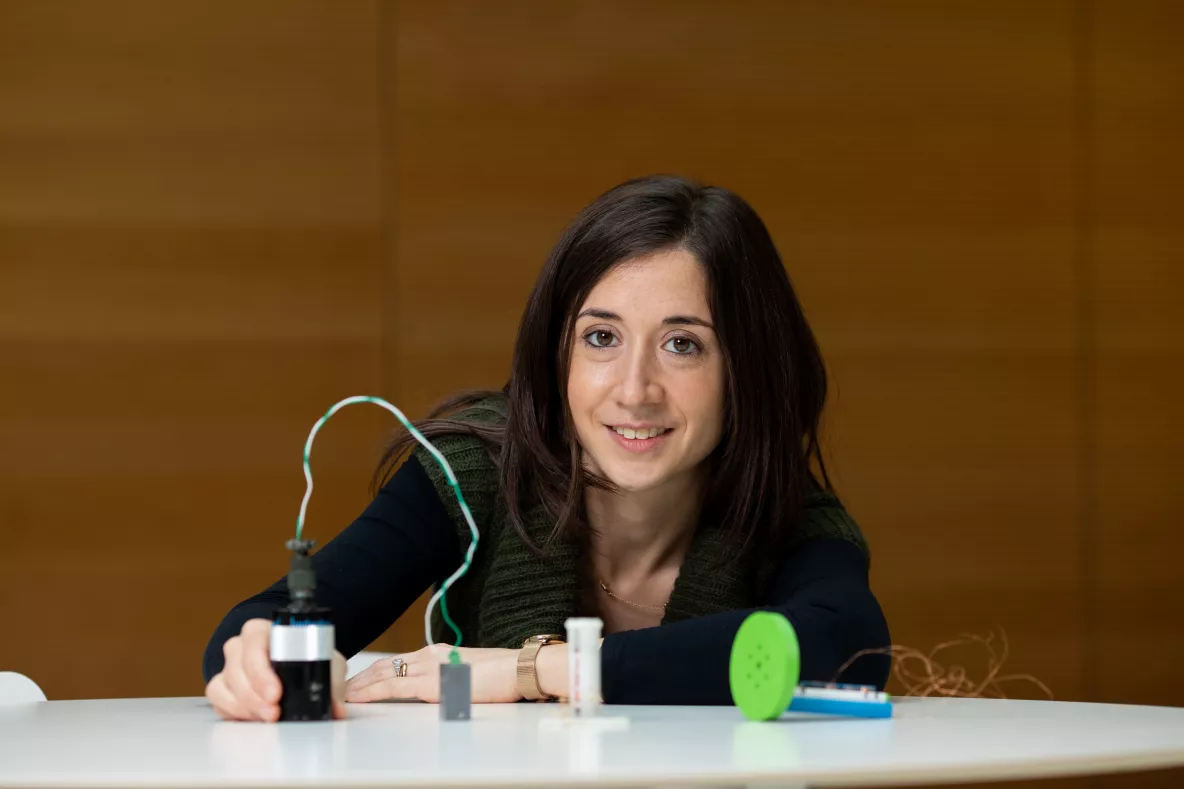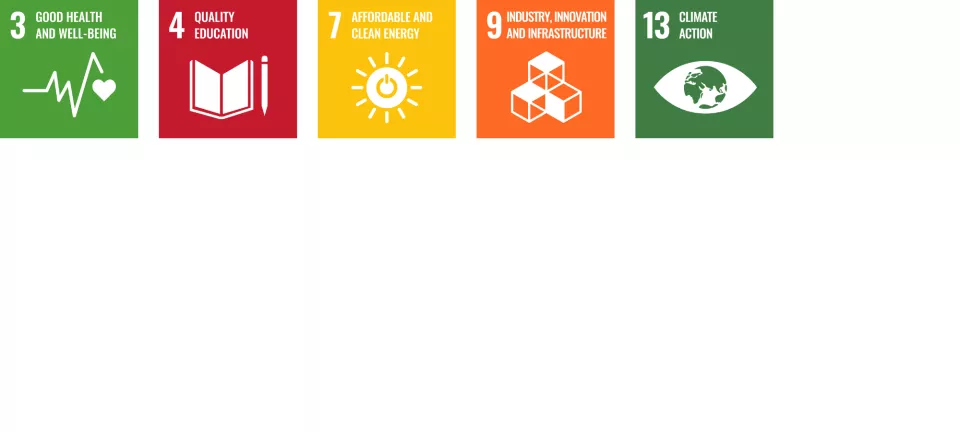
A very significant investment in emerging research talent at University of Limerick has been announced today, as early career researchers receive funding to tackle energy, health, and sustainability challenges.
Minister for Further and Higher Education, Research, Innovation and Science Simon Harris has this Monday announced an investment of €28.5 million across 53 research projects nationally through the SFI-IRC Pathway programme.
The funding will support Ireland’s next generation research leaders in areas which include cancer, nutrition, politics, history, literature, energy and technology.
In total eight researchers at University of Limerick have been funded to the tune of around €4.3m in the announcement.
They are: Dr Valeria Nico, Dr David McNulty, Dr Jennifer Cookman, Dr Sarah Guerin, Dr Nanasaheb Thorat, Dr Soumya Mukherjee and Dr David Madden – all of whom are based at the Bernal Institute at UL - and Dr Yvonne Ryan, of UL’s Department of Electronic and Computer Engineering.
Announcing the investment, Minister for Further and Higher Education, Research, Innovation and Science Simon Harris, TD, said: “I am thrilled to announce these exciting new research projects, which allow researchers to advance their work and further develop their careers towards becoming the next generation of research leaders in Ireland.
“It is important that we retain and support our emerging talent across all areas of research, from astronomy, cancer, economics, energy, to health and nutrition.
“Crucially, this fund focuses on the representation of female researchers in the higher education system. We want to continue to increase the number of females participating in research and funds like this are crucial to helping us achieving this.”
Welcoming the announcement, Professor Norelee Kennedy, Vice President Research at UL, said: “UL’s research talent continues to make great strides in discoveries which are tackling global challenges of energy, health and sustainability. We welcome this national investment in Ireland’s early career researchers.”
Dr Ruth Freeman, Director Science for Society, Science Foundation Ireland, said: “We are delighted to be able to provide this important support to early-career researchers, enabling them to gain the essential skills and experience to develop their track record and become independent research leaders. In partnership with the Irish Research Council, we have been able to support 53 projects, providing resources for excellent researchers and projects across a range of disciplines.”
Dr Louise Callinan, Interim Director of the Irish Research Council, said: “The IRC is committed to cultivating agile independent researchers and funding excellent research across all disciplines. Through this impactful partnership with Science Foundation Ireland, emerging research talent in both AHSS and STEM will be supported toward becoming established independent researchers and future research leaders.”
The SFI-IRC Pathway programme is a new collaborative initiative between Science Foundation Ireland (SFI) and the Irish Research Council (IRC) to support early career research across all disciplines and to encourage interdisciplinary approaches.
Of the 53 projects supported under the first round of this new partnership programme, 36 projects will be supported in science, technology, engineering and maths (STEM) and 17 will be supported in arts, humanities and social sciences (AHSS).
The awards will enable postdoctoral researchers to conduct independent research for a four–year period and will provide funding for a postgraduate student who will be primarily supervised by the awardee.
Full list of projects funded at University of Limerick:
Dr David Madden
Project Name: Automated nanoparticle SYNthesis viA Process analyTICal technology driven pathwayS – SYNAPTICS - €551,300
Metal-organic frameworks (MOFs) are three-dimensional porous frameworks made up of interchangeable metal and organic components that have the potential to revolutionise global energy and medical therapeutics. The versatile nature of MOF construction has drawn comparisons to construction toys such as Meccano and Lego, except on a molecular scale. Despite their potential, challenges remain with regards to the manufacturing of MOF nanoparticles in a manner that can be considered suitable for industrial scale production. SYNAPTICS will utilise advanced process control tools used by the pharmaceutical and petrochemical industries to develop automated and scalable processes for the manufacturing of MOF nanoparticles.
Dr Valeria Nico
Project name: Hybrid Multi-Axial Nonlinear Vibrational Energy Harvesting - €551,121
In the environment there is often an abundance of kinetic energy in the form of ambient vibrations that can be converted into electrical power through energy harvesting techniques. It is proposed to develop a novel small scale vibrational energy harvester that can harvest broadband multi-axial vibrations. The device will use piezoelectric materials and an arrangement of magnets and coils to generate power from the ambient vibrations. The harvester can be used to indefinitely power wireless sensor devices for IoT applications – for example remote monitoring of industrial machinery, railway monitoring, smart agriculture or even wearable devices.
Dr David McNulty
Project Name: ALTERNATE: Advanced Lithium–Sulfur Batteries as a Beyond Lithium-Ion Energy Storage Technology - €549,252
Lithium-ion batteries are the most commonly used type of rechargeable battery in consumer electronics. The limited performance of today’s commercial batteries is well known, with the majority of handheld devices (e.g. smartphones) requiring to be charged every day. Lithium-ion batteries are struggling to keep up with modern technology and there is a growing need to find alternative types of rechargeable batteries. Lithium–sulfur (Li–S) batteries stand out as one of the most promising technologies in terms of both performance and cost. The ALTERNATE project will develop innovative nanostructured materials that will significantly advance the state-of-the-art for Li–S batteries, leading to increased battery operating times.
Dr Jennifer Cookman
Project name: in situ Crystallisation and Electron Crystallography of Pharmaceutical Crystals using Liquid Phase Electron Microscopy - €551,528
Chemical compounds used as ingredients for pharmaceutical products can come in different shapes and sizes called polymorphs. Generally, only a few of these are useful active ingredients and the others are too difficult to produce but could have better properties to improve current treatments. Using an electron microscope, we will recreate the environment these compounds are produced in. We will dramatically slow down the process of crystallisation to observe precisely how these molecules, suspended in liquid, come together to create the building blocks of these important crystals we know as medicines, focus this work on drugs such as anti-depressants.
Dr Sarah Guerin
Project name: Crystal Clear: Standardisation of Eco-Friendly Amino Acid Piezoelectrics - €548,301
Billions of piezoelectric sensors are produced every year to interconvert electrical and mechanical energy and enable the medical device, infrastructure, automotive and aerospace industries, but with a huge environmental cost. The majority of piezoelectric sensors contain Lead Zirconium Titanate (PZT), the fabrication of which requires toxic lead oxide. Prominent lead-free alternatives are heavily processed, and require expensive, non-renewable materials. Biomolecular crystals are also piezoelectric, but can be grown at room temperature with no by-products. Crystal Clear will take on the challenge of developing biocrystals as organic, low-cost, high-performance sensors, to out-perform and phase-out inorganic piezoelectrics with dramatically reduced environmental impact.
Dr Nanasaheb Thorat
Project name: Plasmonic Nanomedicine Coupled Biomolecular Fingerprinting of Brain Cancer - €551,901
Mitochondrial dysfunction is well known to be associated with brain cancer, but less well known is the role that copy numbers in mitochondrial DNA might play in the cancer management. PHOTOBRAIN proposes an alternative approach of a engineered human three-dimensional (3D) mini-brain tumor model (inspired from recent evidence of 3D brain model that can predict the how the brain develops and what goes wrong in neurological disorders). PHOTOBRAIN advancing the state of the art of tumor energy metabolism that is a biochemical fingerprint of aggressive brain cancer cells which represents one of the “hallmarks of cancer”.
Dr Soumya Mukherjee
Project name: Ionic Ultramicroporous Polymer Adsorbents for Energy-efficient Purification of Commodity Chemicals - €550,850
The energy footprint of the chemical industry is disproportionately high, accounting for ca. 15% of global energy consumption. The state-of-the-art for commodity purifications (e.g. carbon capture, fresh water purification, light hydrocarbon separation and toxic gas remediation) is energy-intensive and accounts for around 50% of this footprint. Crystalline physisorbents can reduce this footprint but are limited by cost, performance and/or stability issues. POLYSORB will take an innovative, high risk/high reward approach to addressing the UN SDG’s related to energy sustainability. Specifically, ionic ultramicroporous (< 0.7 nm) (usually amorphous) polymers, IUPs, will be designed and developed for several high volume gas/water purifications.
Dr Yvonne Ryan
Project name: Understanding Mercury in Ireland and Working Towards Net Zero: Developing a Metabolic Inventory of Mercury Added Products and Mercury Containing Wastes in the Built Environment (BE-MAP) - €434,500
Mercury is toxic to humans and the environment. To manage hazardous wastes effectively, we need to know when, where and how much will arise. This research aims to identify mercury waste and mercury added products in the built environment with a particular focus on lighting containing mercury. The findings of this research will contribute to an overall mercury metabolism for Ireland. This will enhance safety for those encountering mercury in the built environment, help form treatment plans for these products and will ultimately protect human and environmental health.
